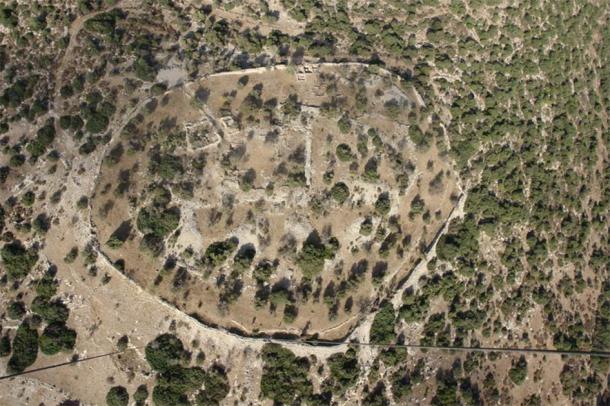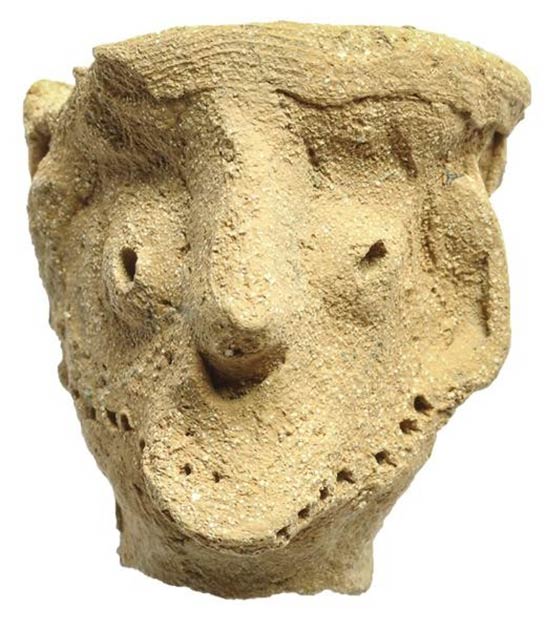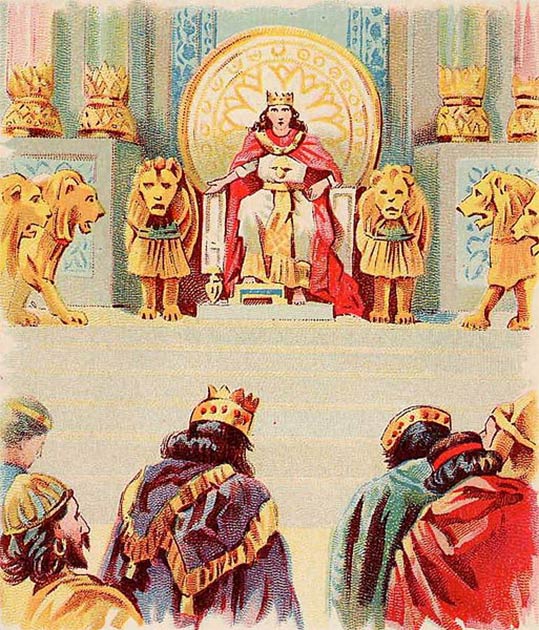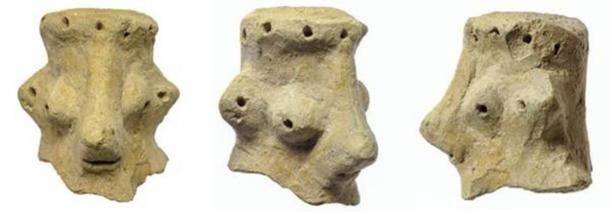A professor of archaeology has claimed a 3,000-year-old clay head idol represents the Jewish god Yahweh. However, two other archaeologists have challenged this interpretation by pointing out why this controversial artifact simply “can’t be Yahweh.”
Yosef Garfinkel is the “head” professor of Biblical Archaeology at the Institute of Archaeology at Hebrew University. Garfinkel co-directed excavations at Khirbet Qeiyafa , an ancient fortress city overlooking the Elah Valley dated to the first half of the 10th century BC, near the Israeli city of Beit Shemesh which is located 30 km from Jerusalem. In a recent article published in Biblical Archaeology Review he explains that the 5 centimeter (2 inch) tall clay head was discovered within the ruins of a large building that he “thinks” was a palace.

Aerial view of Khirbet Qeiyafa, the site of an ancient fortress city overlooking the Elah Valley dated to the first half of the 10th century BC. ( Skyview Photography Ltd / CC BY-SA 3.0 )
Garfinkel describes the unusual artifact as having a flat top with “protruding eyes, ears and a nose.” Because the base of the figure’s neck is well worked, the head was likely attached to a body or to another pottery vessel. The fact that its ears are pierced suggests that the figure “may have worn earrings and that a circle of holes around the head may be part of a headdress.”
Of course, archaeology invariably involves speculation, so from this smattering observation, Garfinkel subjectively concludes that the clay head represents “Yahweh, the God of Israel, riding a horse.” However, the Hebrew Bible forbade ancient Israelis from creating any physical depictions of Yahweh, such as a Yahweh Idol. The Ten Commandments state: “you shall not make for yourself an image in the form of anything in heaven above or on the earth beneath or in the waters below” (Exodus 20:4) . So could this be a Yarweh idol?

This clay male figurine was found at the Tel Moẓa temple along with another male figurine and two horse artifacts. Dated to the late tenth or early ninth century BC, it has pronounced facial features and wears a headdress. Garfinkel describes it as similar to the Qeiyafa figurine, and believes it may be a Yahweh Idol, representing Yahweh or another male god. (Clara Amit / Israel Antiquities Authority )
Unravelling the Apparent Layers of “Biblical” Archaeology
Garfinkel argues that this is the only figurine found at Khirbet Qeiyafa dating back to about 3,000 years ago. Because it was “probably” discovered in a palace, the figurine was “maybe” important to the people who lived there. During the time period, many of the events included in the Hebrew Bible are said to have taken place. According to the archaeologist, an example of these events include the life of King Solomon (if he even existed).
According to a Live Science report, the archaeologist believes that such a visual depiction of God was important for the Israelites who lived at the time: “As the believer sees the face of the idol, in that very moment the idol also looks at the believer.” Garfinkel argues that this is “a metaphysical moment, a contact between earth and heaven, the core of the religious experience.”

The historicity of most biblical figures, including King Solomon seen here, is a subject of hot debate within biblical archaeology. ( Public domain )
And in the Opposite Corner…
If this article was to end here, you’d be left believing that a professor of archaeology discovered an exceptionally rare Yahweh Idol. But Live Science weren’t convinced with his argument, leading them to contact several alternative scholars to get their thoughts on Garfinkel’s interpretation of the Khirbet Qeiyafa head.
Professor Oded Lipschits, an archaeologist at Tel Aviv University , and Shua Kisilevitz, an archaeologist with the Israel Antiquities Authority and Tel Aviv University, have both “denounced the idea” in a jointly written email to Live Science.
“Human heads from Moẓa and Qeiyafa have no markings, symbols or attributes,” such as horns, crescents or bulls to determine that they were gods. When gods were depicted riding animals they “did not sit on them” because they did not “need” the transport, rather they were depicted “standing on the animals,” clarify Lipschits and Kisilevitz in their communication with Live Science . If you are perhaps thinking this is a weak counter argument, the pair of professors also explain that during the time frame in question “Yahweh wasn’t even worshipped in the region yet, much less was he the sole god of Israel.”

This unusual artifact discovered during excavations at Khirbet Qeiyafa has been the cause of the controversy. (Clara Amit / Israel Antiquities Authority )
When Biblical “Beliefs” Clash With Scientific “Facts”
Their argument is bolstered by that fact that even if the clay figurine was indeed a depiction of a god, it certainly didn’t represent Yahweh as he “did not appear in the region before the 9th century BC.” Lipschits and Kisilevitz conclude that Garfinkel’s article is “riddled with factual inaccuracies and a flawed methodological approach, which ignores all the current and most relevant publications, both in the study of cult in the ancient Near East and of the Moẓa temple and its cultic artifacts by the excavators.”
What is disturbing in this case, is that it appears that a head professor of archaeology, a teacher, has thought up a massive “biblical” theory, and then used the evidence to support his hypothesis, dropping all contravening data in order to ensure the evidence fits his predetermined narrative. While pareidolia is the tendency for incorrect perception of stimuli, such as seeing duck shapes in clouds, there is no excuse for this manipulation of the evidence, conscious or not. The professor must be surrounded by associates who knew he was well off the mark. It is fortunate for us that these two scientists have spoken up with the voice of reason and questioned his conclusions.
Top image: A professor of archaeology has made a controversial claim that a 3,000-year-old clay head, found at Khirbet Qeiyafa in Israel, is a Yahweh idol representing the Jewish god Yahweh. Source: Clara Amit / Israel Antiquities Authority
By Ashley Cowie
Related posts:
Views: 0
 RSS Feed
RSS Feed















 August 1st, 2020
August 1st, 2020  Awake Goy
Awake Goy  Posted in
Posted in  Tags:
Tags: 
















